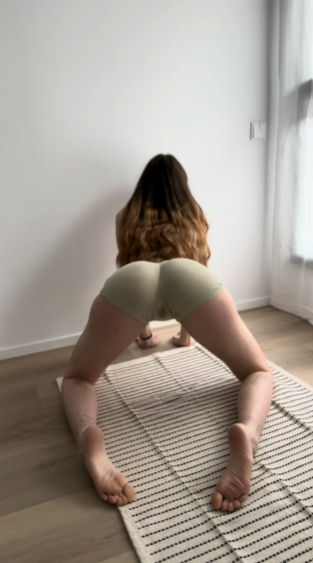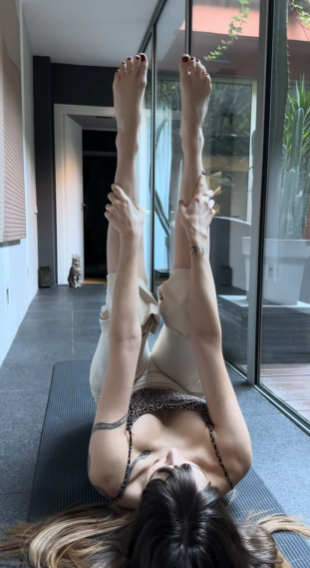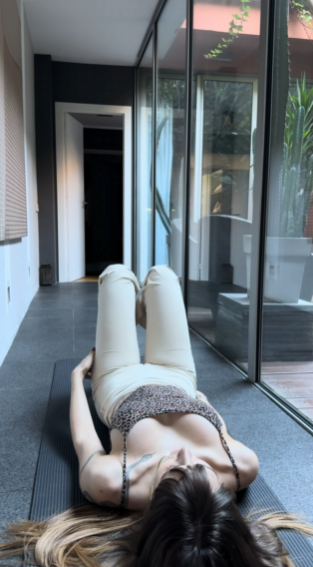
When it comes to overall health, flexibility, and posture, one of the most overlooked yet essential areas of the body is the back. Stretching from the back not only improves your physical performance but also reduces the risk of injury, alleviates pain, and boosts overall well-being. Whether you’re an athlete, an office worker, or someone simply trying to improve your fitness routine, incorporating back stretches into your daily life can yield lasting benefits. This article explores the importance of stretching from the back, different types of back stretches, and how to do them safely and effectively.
Why Stretching the Back Matters
The back is a complex structure of muscles, ligaments, bones, and nerves that work together to support the spine and allow us to move, twist, and bend. Everyday activities—like sitting at a desk, lifting objects, or even sleeping in the wrong position—can cause tension or misalignment in the back. Over time, this tension leads to stiffness, pain, and reduced mobility.
Stretching the back helps to:
- Relieve tension and stress: Emotional and physical stress often manifest as tight muscles in the upper or lower back.
- Increase flexibility: Regular stretching keeps the muscles elastic and joints fluid, improving range of motion.
- Improve posture: Stretching corrects imbalances caused by poor posture and prevents the rounding of the shoulders or slouching.
- Reduce back pain: Many chronic pain issues are linked to tight or weak muscles, especially in the lower back.
- Enhance circulation: Stretching encourages blood flow to muscles, aiding in faster recovery and promoting overall health.

Basic Guidelines Before You Stretch
Before diving into specific stretches, there are a few key principles to keep in mind:
- Warm-up first: Never stretch a cold muscle. Do a light 5-minute warm-up like walking or arm circles to get the blood flowing.
- Breathe deeply: Use slow, deep breaths to help release tension and oxygenate your muscles.
- Never force a stretch: You should feel a gentle pull, not pain. Overstretching can lead to injury.
- Hold each stretch for 15-30 seconds: This allows muscles time to relax and lengthen.
- Stay consistent: Like any form of exercise, consistency is key. Aim to stretch 3–5 times per week.

Effective Stretches for the Back
Here are some of the best and most accessible back stretches that you can incorporate into your routine, whether you’re a beginner or more experienced.
1. Cat-Cow Stretch (Spinal Flex and Extend)
A yoga staple, this stretch promotes spinal mobility and releases tension from the upper, mid, and lower back.
How to do it:
- Start on your hands and knees in a tabletop position.
- Inhale, arch your back, drop your belly, and look up (Cow Pose).
- Exhale, round your spine towards the ceiling, tuck your chin, and draw your belly in (Cat Pose).
- Repeat for 1–2 minutes, flowing with your breath.
Benefits: Improves spinal flexibility, relieves back tension, and engages the core.
2. Child’s Pose
This calming pose stretches the spine gently and can be a great way to unwind after a long day.
How to do it:
- Begin on your knees and sit your hips back toward your heels.
- Reach your arms forward and rest your forehead on the ground.
- Hold for 30 seconds to 1 minute, breathing deeply.
Benefits: Stretches the lower back, hips, and spine; promotes relaxation.
3. Seated Forward Fold
A classic stretch that targets the entire back line of the body.
How to do it:
- Sit with legs extended in front of you.
- Inhale and reach your arms up.
- Exhale as you fold forward from the hips, reaching toward your toes.
- Keep your spine long and hold for 30 seconds.
Benefits: Elongates the back muscles, stretches the hamstrings, improves posture.
4. Spinal Twist (Supine or Seated)
Twisting the spine helps to release stiffness and restore spinal mobility.
How to do it (Supine version):
- Lie on your back and hug your right knee into your chest.
- Cross it over your body to the left while keeping your shoulders grounded.
- Extend your right arm and gaze over it.
- Hold for 30 seconds and switch sides.
Benefits: Releases tightness in the lower back, stretches the glutes and spine.
5. Bridge Pose
More than a stretch, this pose also strengthens the muscles along your back.
How to do it:
- Lie on your back with knees bent and feet flat on the floor.
- Press your feet and arms into the ground as you lift your hips.
- Keep thighs parallel and hold for 20–30 seconds before slowly lowering.
Benefits: Strengthens and stretches the lower back, improves hip flexibility.
6. Thread the Needle
This gentle stretch targets the upper back, shoulders, and neck.
How to do it:
- Start in a tabletop position.
- Slide your right arm underneath your left arm and rest your shoulder and ear on the floor.
- Extend the left arm forward or keep it bent.
- Hold for 30 seconds and switch sides.
Benefits: Opens the upper back and shoulders, relieves stiffness in the neck and spine.

Common Mistakes to Avoid
Even though stretching may seem simple, many people do it incorrectly. Here are some pitfalls to steer clear of:
- Bouncing: Stretching should be smooth and controlled. Bouncing can tear muscle fibers.
- Ignoring pain signals: Stretching should not be painful. If it hurts, ease up.
- Holding your breath: This creates tension. Breathing helps your muscles relax.
- Stretching cold muscles: Always warm up beforehand to prevent injuries.
- Doing the same stretches every time: Mix it up to target different parts of your back.
Stretching the Back for Different Lifestyles
Depending on your daily activities, you might want to tailor your back stretching routine.
- Office Workers: Focus on upper back and neck stretches like shoulder rolls, seated twists, and chest openers to counteract prolonged sitting.
- Athletes: Incorporate dynamic stretching before workouts and static stretches after to maintain flexibility and performance.
- Older Adults: Gentle back stretches help maintain mobility and reduce the risk of falls or back issues.

When to See a Professional
While stretching is highly beneficial, if you’re experiencing chronic or sharp back pain, consult a healthcare provider before beginning any routine. Conditions like herniated discs, scoliosis, or sciatica may require specific guidance.
Final Thoughts
Stretching from the back is more than a feel-good activity—it’s a powerful way to maintain your body’s strength, flexibility, and resilience. With just 10–15 minutes a day, you can reduce pain, improve posture, and feel more energized. Your back supports you through every movement of life. It deserves care, attention, and regular stretching to keep you feeling your best. Start today, and over time, you’ll notice not just physical improvements, but a greater sense of well-being and comfort in your own body.


